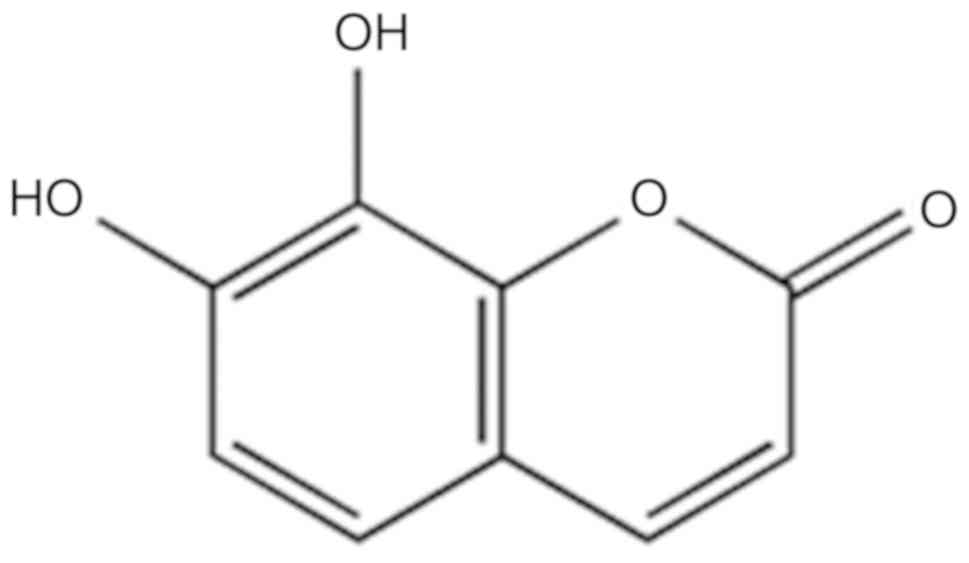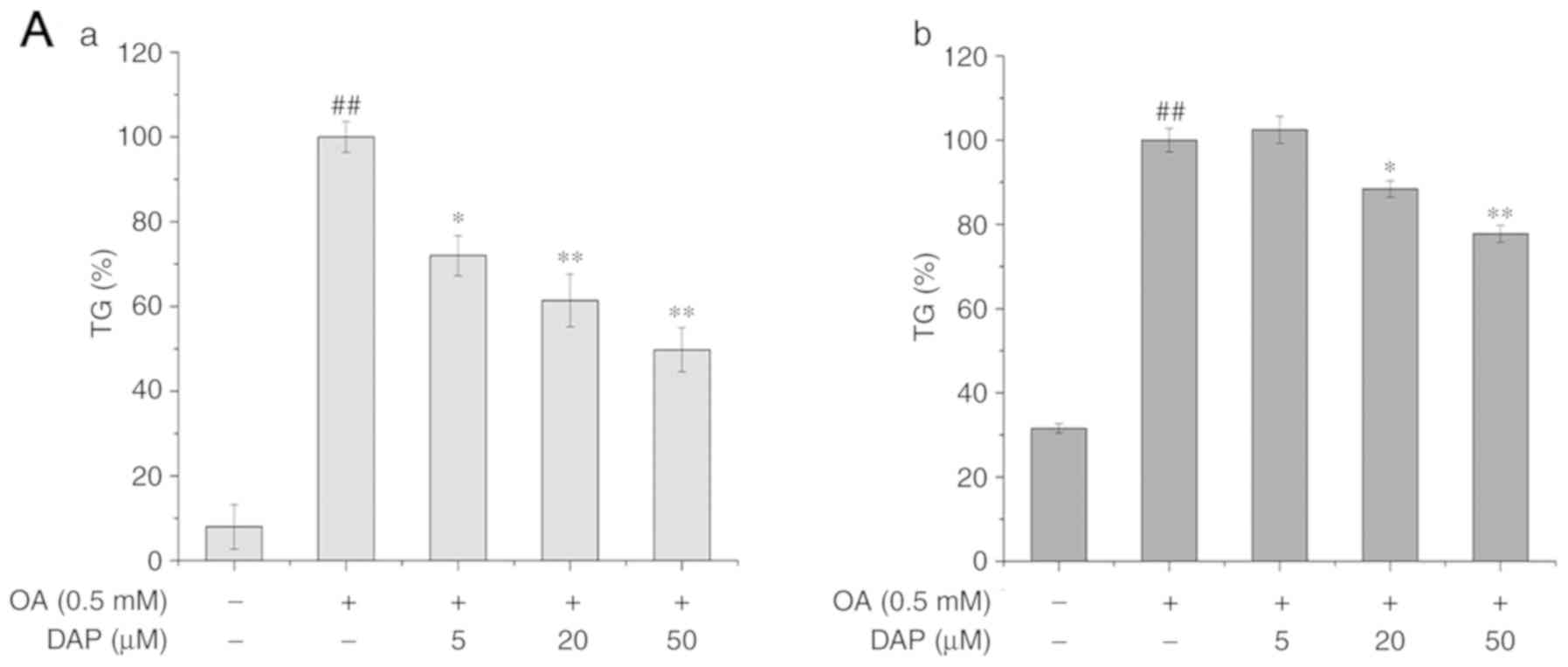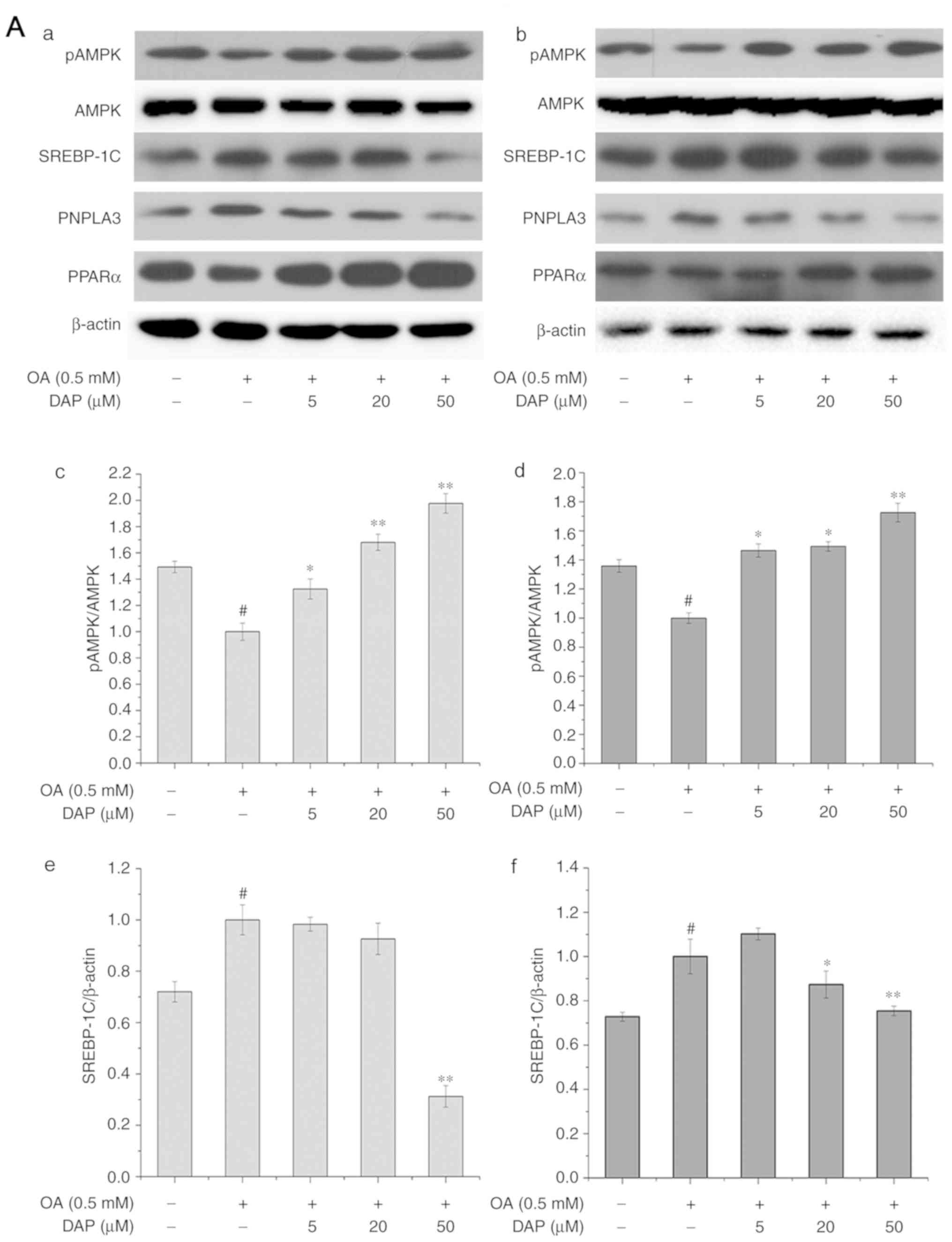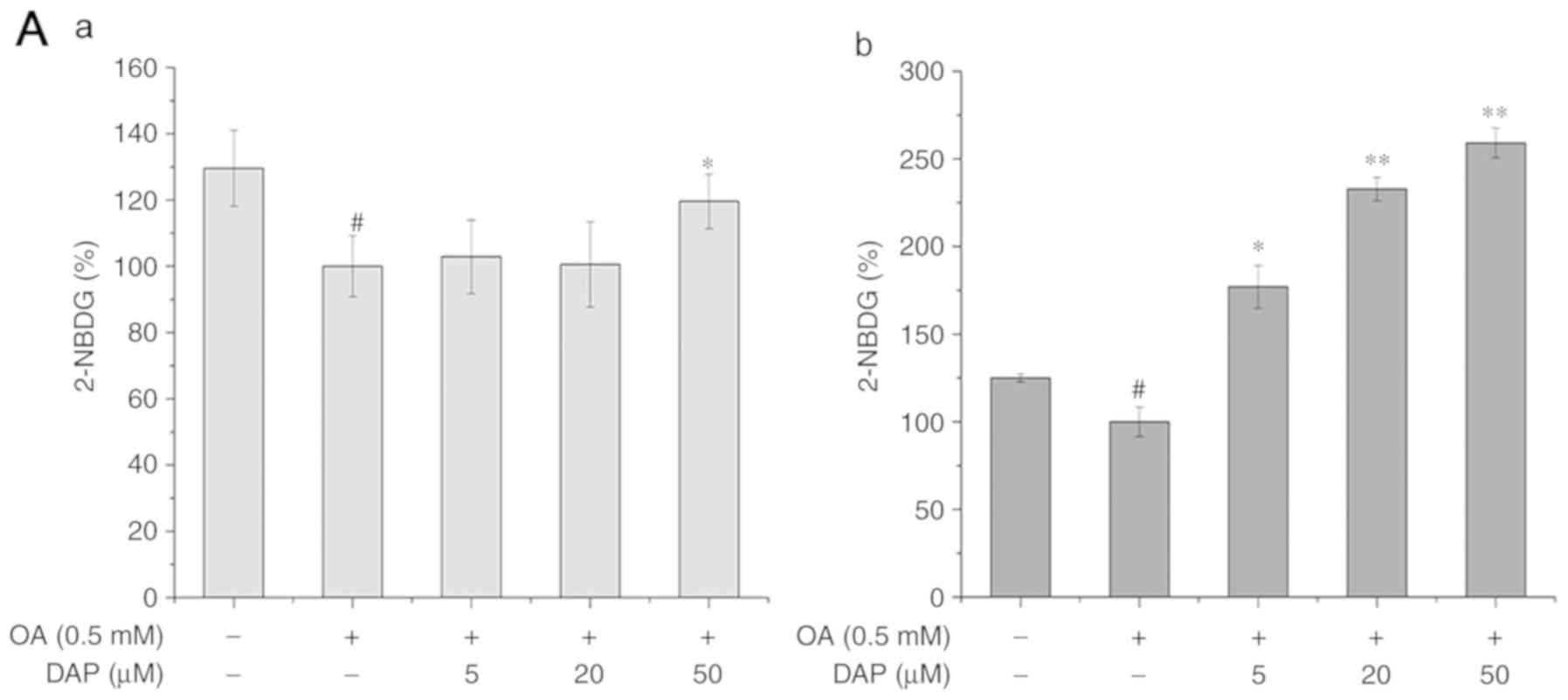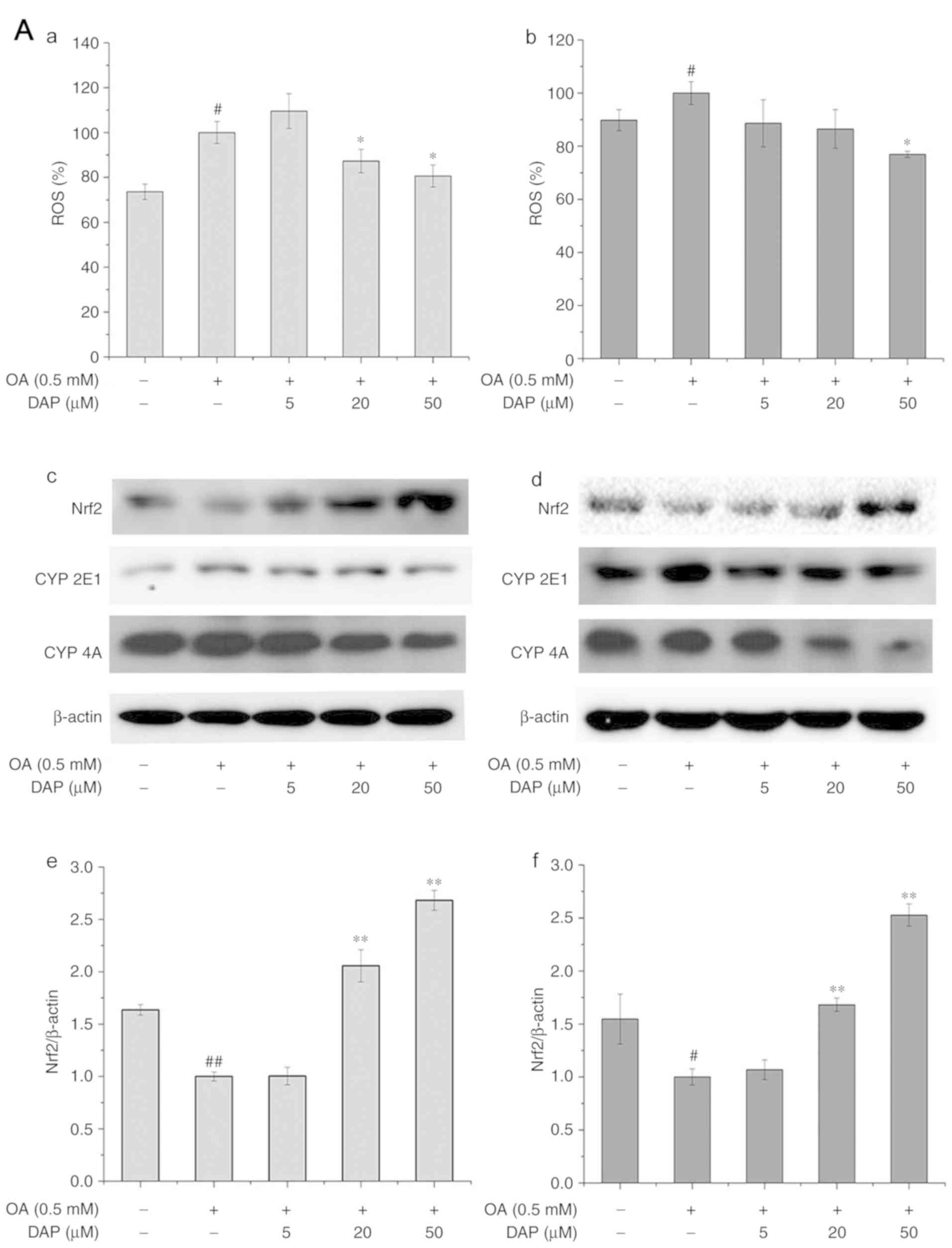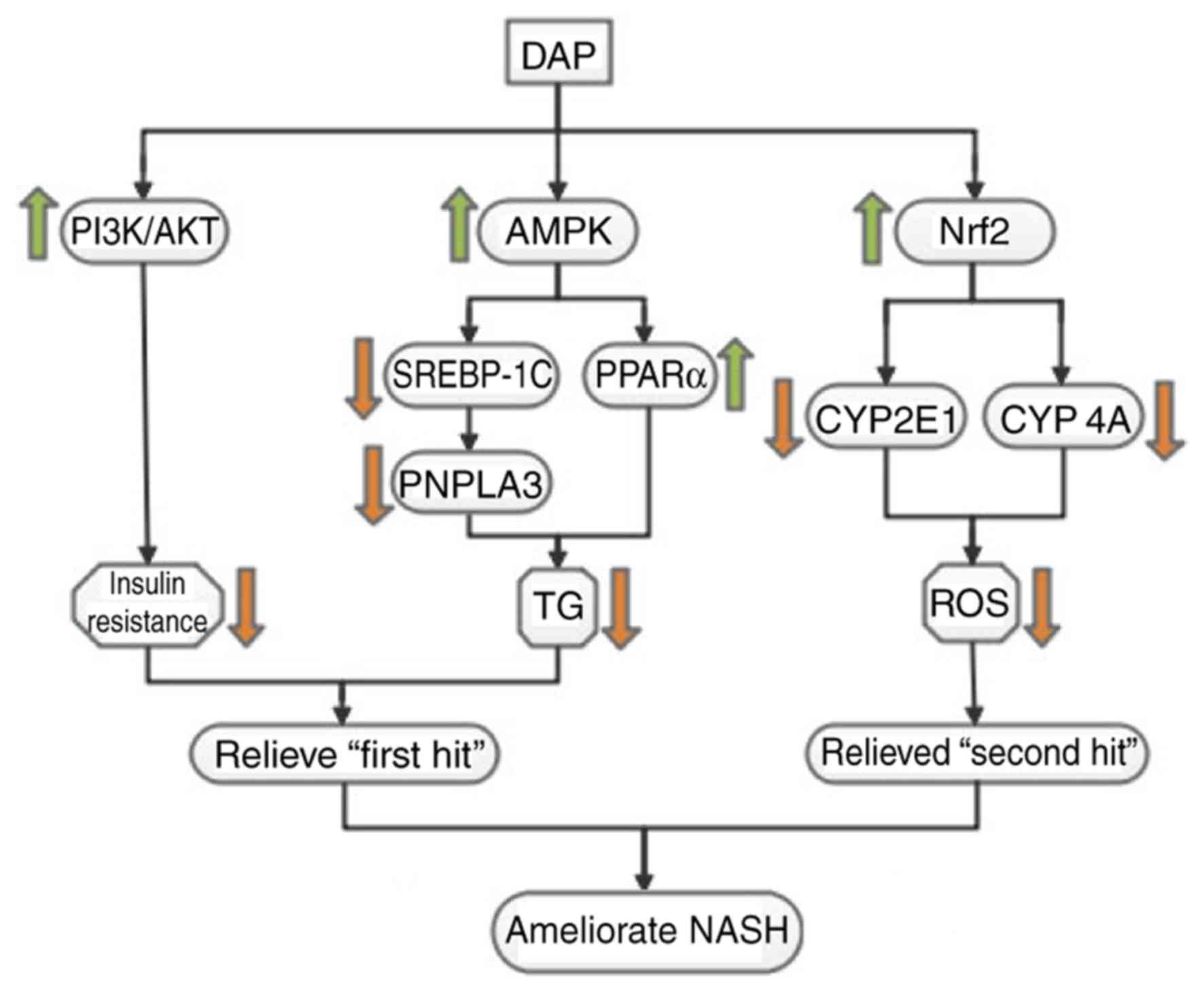|
1
|
Issa D, Patel V and Sanyal AJ: Future
therapy for non-alcoholic fatty liver disease. Liver Int. 38 (Suppl
1):S56–S63. 2018. View Article : Google Scholar
|
|
2
|
Suzuki A, Angulo P, Lymp J, St Sauver J,
Muto A, Okada T and Lindor K: Chronological development of elevated
aminotransferases in a nonalcoholic population. Hepatology.
41:64–71. 2005. View Article : Google Scholar : PubMed/NCBI
|
|
3
|
Tilg H and Moschen AR: Evolution of
inflammation in nonalcoholic fatty liver disease: The multiple
parallel hits hypothesis. Hepatology. 52:1836–1846. 2010.
View Article : Google Scholar : PubMed/NCBI
|
|
4
|
Anstee QM and Goldin RD: Mouse models in
non-alcoholic fatty liver disease and steatohepatitis research. Int
J Exp Pathol. 87:1–16. 2006. View Article : Google Scholar : PubMed/NCBI
|
|
5
|
Review Team, LaBrecque DR, Abbas Z, Anania
F, Ferenci P, Khan AG, Goh KL, Hamid SS, Isakov V, Lizarzabal M, et
al: World gastroenterology organisation global guidelines:
Nonalcoholic fatty liver disease and nonalcoholic steatohepatitis.
J Clin Gastroenterol. 48:467–473. 2014.PubMed/NCBI
|
|
6
|
Lee YH, Kim KJ, Yoo ME, Kim G, Yoon HJ, Jo
K, Youn JC, Yun M, Park JY, Shim CY, et al: Association of
nonalcoholicsteatohepatitis with subclinical myocardial dysfunction
in non-cirrhotic patients. J Hepatol. 68:764–772. 2018. View Article : Google Scholar : PubMed/NCBI
|
|
7
|
Marra F, Gastaldelli A, Svegliati Baroni
G, Tell G and Tiribelli C: Molecular basis and mechanisms of
progression of non-alcoholic steatohepatitis. Trends Mol Med.
14:72–81. 2008. View Article : Google Scholar : PubMed/NCBI
|
|
8
|
Sumida Y and Yoneda M: Current and future
pharmacological therapies for NAFLD/NASH. J Gastroenterol.
53:362–376. 2018. View Article : Google Scholar : PubMed/NCBI
|
|
9
|
Takahashi Y, Suqimoto K, Inui H and
Fukusato T: Current pharmacological therapies for nonalcoholic
fatty liver disease/nonalcoholic steatohepatitis. World J
Gastroenterol. 21:3777–3785. 2015. View Article : Google Scholar : PubMed/NCBI
|
|
10
|
Liu J, Tian J, He W, Xie J, Hu Z and Chen
X: Spectrofluorimetric study of the binding of daphnetin to bovine
serum albumin. J Pharm Biomed Anal. 35:671–677. 2004. View Article : Google Scholar : PubMed/NCBI
|
|
11
|
Finn GJ, Creaven BS and Egan DA: Daphnetin
induced differentiation of human renal carcinoma cells and its
mediation by p38 mitogen-activated protein kinase. Biochem
Pharmacol. 67:1779–1788. 2004. View Article : Google Scholar : PubMed/NCBI
|
|
12
|
Lv H, Liu Q, Zhou J, Tan G, Deng X and Ci
X: Daphnetin-mediated Nrf2 antioxidant signaling pathways
ameliorate tert-butyl hydroperoxide (t-BHP)-induced mitochondrial
dysfunction and cell death. Free Radic Biol Med. 106:38–52. 2017.
View Article : Google Scholar : PubMed/NCBI
|
|
13
|
Venugopala KN, Rashmi V and Odhav B:
Review on natural coumarin lead compounds for their pharmacological
activity. Biomed Res Int. 2013:9632482013. View Article : Google Scholar : PubMed/NCBI
|
|
14
|
Um MY, Moon MK, Ahn J and Youl Ha T:
Coumarin attenuates hepatic steatosis by down-regulating lipogenic
gene expression in mice fed a high-fat diet. Br J Nut.
109:1590–1597. 2013. View Article : Google Scholar
|
|
15
|
Yu W, Wang H, Ying H, Yu Y, Chen D, Ge W
and Shi L: Daphnetin attenuates microglial activation and
proinflammatory factor production via multiple signaling pathways.
Int Immunopharmacol. 21:1–9. 2014. View Article : Google Scholar : PubMed/NCBI
|
|
16
|
Livak KJ and Schmittgen TD: Analysis of
relative gene expression data using real-time quantitative PCR and
the 2(-Delta Delta C(T)) method. Methods. 25:402–408. 2001.
View Article : Google Scholar : PubMed/NCBI
|
|
17
|
Harrison SA, Oliver D, Arnold HL, Gogia S
and Neuschwander-Tetri BA: Development and validation of a simple
NAFLD clinical scoring system for identifying patients without
advanced disease. Gut. 57:1441–1447. 2008. View Article : Google Scholar : PubMed/NCBI
|
|
18
|
Vacca M, Allison M, Griffin JL and
Vidal-Puig A: Fatty acid and glucose sensors in hepatic lipid
metabolism: Implications in NAFLD. Semin Liver Dis. 35:250–261.
2015. View Article : Google Scholar : PubMed/NCBI
|
|
19
|
Szczepaniak LS, Nurenberg P, Leonard D,
Browning JD, Reingold JS, Grundy S, Hobbs HH and Dobbins RL:
Magnetic resonance spectroscopy to measure hepatic triglyceride
content: Prevalence of hepatic steatosis in the general population.
Am J Physiol Endocrinol Metab. 288:E462–E468. 2005. View Article : Google Scholar : PubMed/NCBI
|
|
20
|
Kanuri G and Bergheim I: In vitro and in
vivo models of non-alcoholic fatty liver disease (NAFLD). Int J Mol
Sci. 14:11963–11980. 2013. View Article : Google Scholar : PubMed/NCBI
|
|
21
|
Rafiei H, Omidian K and Bandy B:
Comparison of dietary polyphenols for protection against molecular
mechanisms underlying nonalcoholic fatty liver disease in a cell
model of steatosis. Mol Nutr Food Res. 61:2017. View Article : Google Scholar : PubMed/NCBI
|
|
22
|
Xie C, Chen Z, Zhang C, Xu X, Jin J, Zhan
W, Han T and Wang J: Dihydromyricetin ameliorates oleic
acid-induced lipid accumulation in L02 and HepG2 cells by
inhibiting lipogenesis and oxidative stress. Life Sci. 157:131–139.
2016. View Article : Google Scholar : PubMed/NCBI
|
|
23
|
Fan JG, Wei L and Zhuang H: National
Workshop on Fatty Liver and Alcoholic Liver Disease, Chinese
Society of Hepatology, Chinese Medical Association; Fatty Liver
Disease Expert Committee, Chinese Medical Doctor Association:
Guideline of prevention and treatment of nonalcoholic fatty liver
disease (2018, China). J Dig Dis. Nov 16–2018.(Epub ahead of
print).
|
|
24
|
Smith BK, Marcinko K, Desjardins EM, Lally
JS, Ford RJ and Steinberg GR: Treatment of nonalcoholic fatty liver
disease: Role of AMPK. Am J Physiol Endocrinol Metab.
311:E730–E740. 2016. View Article : Google Scholar : PubMed/NCBI
|
|
25
|
Kohjima M, Higuchi N, Kato M, Kotoh K,
Yoshimoto T, Fujino T, Yada M, Yada R, Harada N, Enjoji M, et al:
SREBP-1c, regulated by the insulin and AMPK signaling pathways,
plays a role in nonalcoholic fatty liver disease. Int J Mol Med.
21:507–511. 2008.PubMed/NCBI
|
|
26
|
Ruderman NB, Carling D, Prentki M and
Cacicedo JM: AMPK, insulin resistance, and the metabolic syndrome.
J Clin Invest. 123:2764–2772. 2013. View
Article : Google Scholar : PubMed/NCBI
|
|
27
|
Ahmed MH and Byrne CD: Modulation of
sterol regulatory element binding proteins (SREBPs) as potential
treatments for non-alcoholic fatty liver disease (NAFLD). Drug
Discov Today. 12:740–747. 2007. View Article : Google Scholar : PubMed/NCBI
|
|
28
|
Dubuquoy C, Robichon C, Lasnier F,
Langlois C, Dugail I, Foufelle F, Girard J, Burnol AF, Postic C and
Moldes M: Distinct regulation of adiponutrin/PNPLA3 gene expression
by the transcription factors ChREBP and SREBP1c in mouse and human
hepatocytes. J Hepatolv. 55:145–153. 2011. View Article : Google Scholar
|
|
29
|
Seo YS, Ji HK, Jo NY, Choi KM, Baik SH,
Park JJ, Kim JS, Byun KS, Bak YT, Lee CH, et al: PPAR agonists
treatment is effective in a nonalcoholic fatty liver disease animal
model by modulating fatty-acid metabolic enzymes. J Gastroenterol
Hepatol. 23:102–109. 2008.PubMed/NCBI
|
|
30
|
Zheng T, Yang X, Wu D, Xing S, Bian F, Li
W, Chi J, Bai X, Wu G, Chen X, et al: Salidroside ameliorates
insulin resistance through activation of a mitochondria-associated
AMPK/PI3K/Akt/GSK3β pathway. Br J Pharmacol. 172:3284–3301. 2015.
View Article : Google Scholar : PubMed/NCBI
|
|
31
|
Sanyal AJ, Campbellsargent C, Mirshahi F,
Rizzo WB, Contos MJ, Sterling RK, Luketic VA, Shiffman ML and Clore
JN: Nonalcoholic steatohepatitis: Association of insulin resistance
and mitochondrial abnormalities. Gastroenterology. 120:1183–1192.
2001. View Article : Google Scholar : PubMed/NCBI
|
|
32
|
Gastaldelli A, Cusi K, Pettiti M, Hardies
J, Miyazaki Y, Berria R, Buzzigoli E, Sironi AM, Cersosimo E,
Ferrannini E and Defronzo RA: Relationship between hepatic/visceral
fat and hepatic insulin resistance in nondiabetic and type 2
diabetic subjects. Gastroenterology. 133:496–506. 2007. View Article : Google Scholar : PubMed/NCBI
|
|
33
|
Bugianesi E, Gastaldelli A, Vanni E,
Gambino R, Cassader M, Baldi S, Ponti V, Pagano G, Ferrannini E and
Rizzetto M: Insulin resistance in non-diabetic patients with
non-alcoholic fatty liver disease: Sites and mechanisms.
Diabetologia. 48:634–642. 2005. View Article : Google Scholar : PubMed/NCBI
|
|
34
|
Dunaif A: Insulin resistance and the
polycystic ovary syndrome: Mechanism and implications for
pathogenesis. Endocr Rev. 18:774–800. 1997. View Article : Google Scholar : PubMed/NCBI
|
|
35
|
Hotamisligil GS, Shargill NS and
Spiegelman BM: Adipose expression of tumor necrosis factor-alpha:
Direct role in obesity-linked insulin resistance. Science.
259:87–91. 1993. View Article : Google Scholar : PubMed/NCBI
|
|
36
|
Yamauchi T, Kamon J, Waki H, Terauchi Y,
Kubota N, Hara K, Mori Y, Ide T, Murakami K, Tsuboyama-Kasaoka N,
et al: The fat-derived hormone adiponectin reverses insulin
resistance associated with both lipoatrophy and obesity. Nat Med.
7:941–946. 2001. View
Article : Google Scholar : PubMed/NCBI
|
|
37
|
Shoelson SE, Lee J and Goldfine AB:
Inflammation and insulin resistance. J Clin Invest. 116:1793–1807.
2006. View Article : Google Scholar : PubMed/NCBI
|
|
38
|
Sharma BR, Kim HJ and Rhyu DY: Caulerpa
lentillifera extract ameliorates insulin resistance and regulates
glucose metabolism in C57BL/KsJ-db/db mice via PI3K/AKT signaling
pathway in myocytes. J Transl Med. 13:622015. View Article : Google Scholar : PubMed/NCBI
|
|
39
|
Sanyal AJ, Campbellsargent C, Mirshahi F,
Rizzo WB, Contos MJ, Sterling RK, Luketic VA, Shiffman ML and Clore
JN: Nonalcoholic steatohepatitis: Association of insulin resistance
and mitochondrial abnormalities. Gastroenterology. 120:1183–1192.
2001. View Article : Google Scholar : PubMed/NCBI
|
|
40
|
Rao MS and Reddy JK: Peroxisomal
beta-oxidation and steatohepatitis. Semin Liver Dis. 21:43–55.
2001. View Article : Google Scholar : PubMed/NCBI
|
|
41
|
Schattenberg JM and Czaja MJ: Regulation
of the effects of CYP2E1-induced oxidative stress by JNK signaling.
Redox Biol. 3:7–15. 2014. View Article : Google Scholar : PubMed/NCBI
|
|
42
|
Shen L, Zhou T, Wang J, Sang X, Lan L, Luo
L and Yin Z: Daphnetin reduces endotoxin lethality in mice and
decreases LPS-induced inflammation in Raw264.7 cells via
suppressing JAK/STATs activation and ROS production. Inflamm Res.
66:579–589. 2017. View Article : Google Scholar : PubMed/NCBI
|
|
43
|
Li M, Shi X, Chen F and Hao F: Daphnetin
inhibits inflammation in the NZB/W F1 systemic lupus erythematosus
murine model via inhibition of NF-κB activity. Exp Ther Med.
13:455–460. 2017. View Article : Google Scholar : PubMed/NCBI
|















